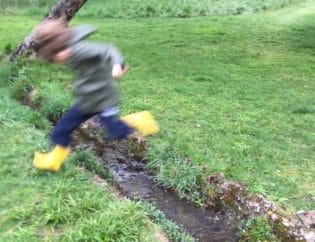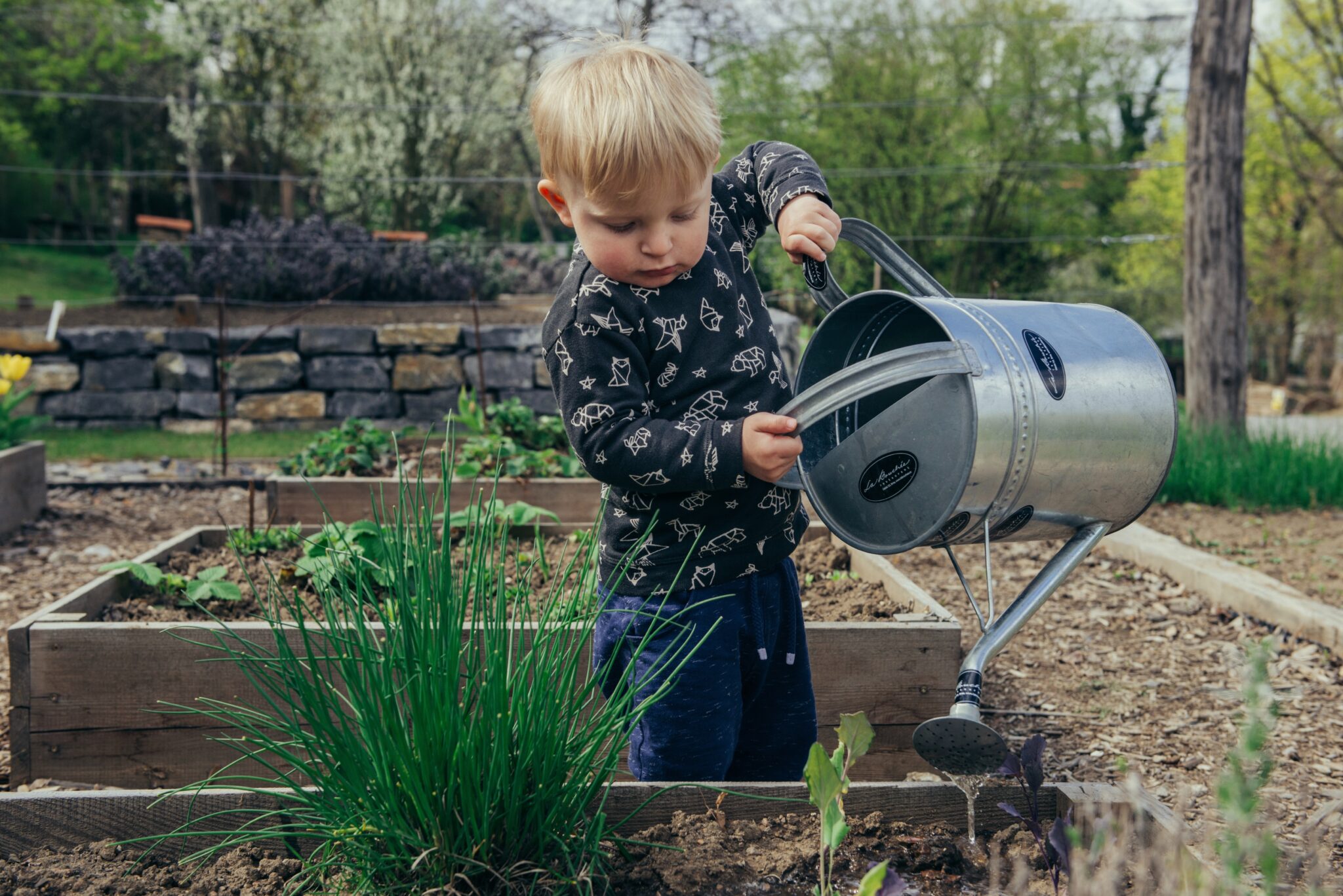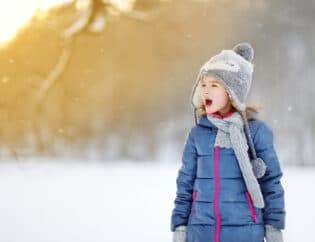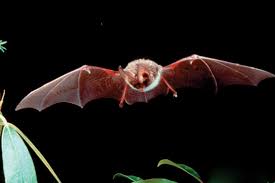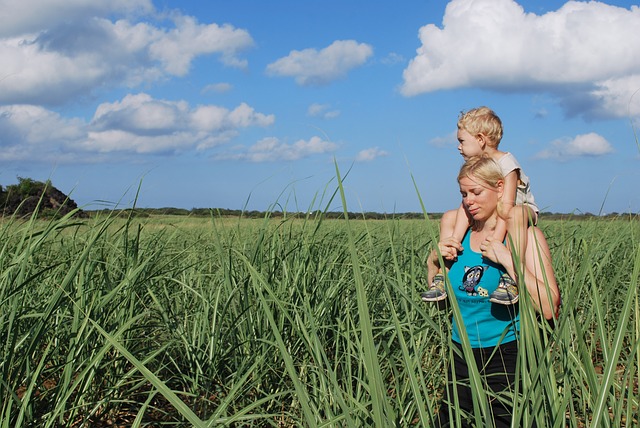
Often, when we think about exploring nature with children, we look for green spaces. Parks, gardens, forests offer countless opportunities to learn about and engage with nature with our children. But above our heads is an ongoing, dynamic natural history live show.
Much like kids, clouds never stay still. They’re in a state of perpetual motion and transformation, changing from one form to another. Helping your child explore this form of nature is a great way to help them focus on the natural world, make connections within it and feel connected to it themselves.
What are clouds
Cloud formation kicks off when heat from the sun causes liquid water from places like oceans, rivers and swimming pools to change into an invisible gas called water vapor. This process is called evaporation. Eventually, these water droplets form on tiny particles, like dust, that are floating in the air. This happens everywhere water is in contact with air.
Clouds are made up of lots of tiny water droplets or ice particles floating in the sky at different heights. They form when rising warm air cools. And this warm air helps to keep them floating.
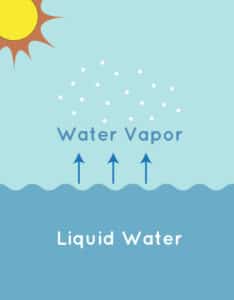


Cloud Variation
Even though all clouds are made up of basically the same thing: water droplets or ice crystals that float in the sky, all clouds look a little bit different from one another. It's these differences that can help us predict a change in the weather. For instance, some clouds look white because they reflect light from the sun while others look grey because they’re full of water.
Clouds all float at different heights and while they appear to be moving slowly, some travel as fast as 100mph. According to the World Meteorological Organization's International Cloud Atlas, more than 100 types of clouds exist! Learn about the different types of clouds here.
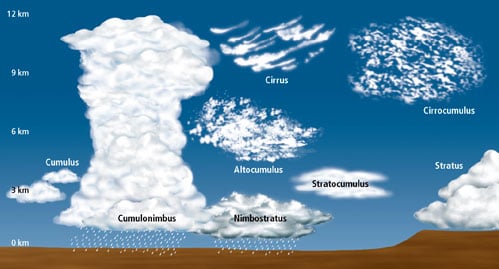
Clouds are classified according to their height above and appearance (texture) from the ground. Older children may find the cloud roots and translations helpful when learning how to classify clouds.
Cirro-: curl of hair, high
Strato-: layer
Cumulo-: heap
Alto-: mid
Nimbo-: rain, precipitation
We usually think of clouds as being up in the sky, but when conditions are right, a cloud can form at ground level, too. Then it’s called “fog.” If you’ve ever walked through fog, you’ve walked through a cloud.
Why Clouds Float
While a cloud is made up of water droplets, the droplets are very small and so they have a lot of surface area that keeps them from falling. Even being very small and light, clouds would eventually fall if it wasn't for the warm air rising below them keeping them up. Remember that clouds form when rising warm air cools. This warm air helps to keep clouds floating.

There’s actually a lot to learn about clouds. And a lot to learn from them. In fact, clouds are considered one of the most challenging aspects of climate science because truly understanding clouds requires a deep understanding of the entire atmosphere.
10 Activities for Exploring Clouds with Children
Cloud poetry & songs. Clouds can help your child build their vocabulary, practice their poetry or fine-tune description writing. Ask your child to describe the clouds they see. Help them keep track of descriptive words such as fluffy, feathery, wispy, hazy, happy, gloomy, misty, stormy, sad, ominous, stormy, brooding, floaty, blobby...and put them into a poem. Encourage them to explore another form of art and write a song about clouds. Ask them how the clouds affect their mood.
Cloud art. Study the art of cloud aficionados like Vincent Van Gogh. How do different artists depict clouds? Are they light and wispy, heavier and denser? Then have your child try out their own artistic treatment of a cloudy sky. Try watercolor or light inks on a dark piece of paper. Ask them to try to represent clouds from different perspectives such as from an ant's POV on the ground or a bird flying through them.
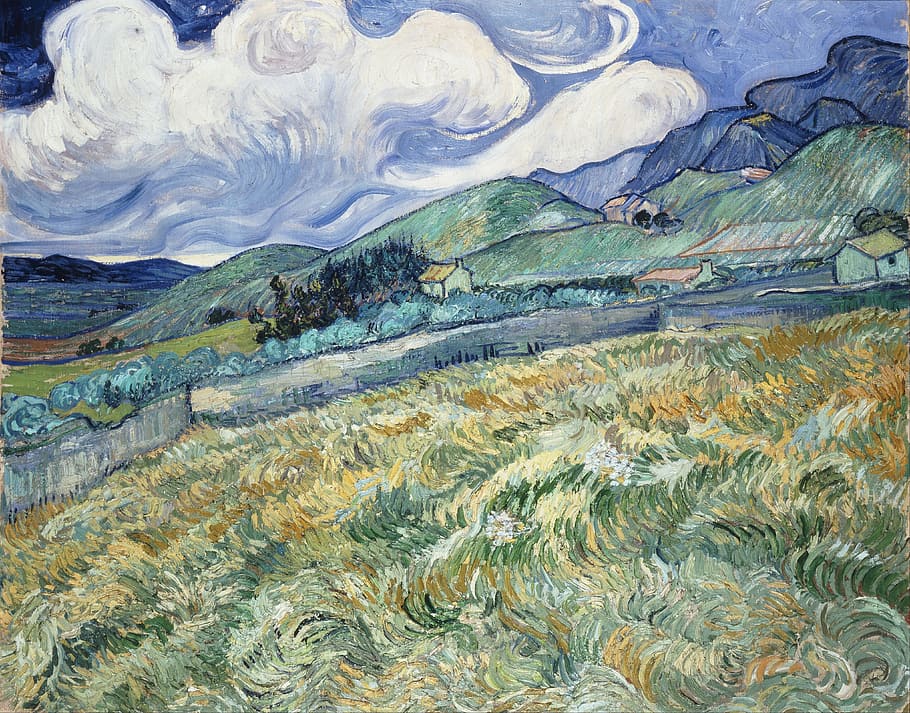
Cloud journaling. Encourage your child to study the clouds, noting their shape and weather patterns. If they do this for a few days, a week or a whole season or year, they will be tuned into the changes in our atmosphere and seasons.
Cloud spotting. Your child can learn a lot about the natural world by watching clouds, an activity called cloud spotting. Help your child learn the types of clouds with our cloud spotting activity.
Cloud meditation. Watching the drifting and changing shapes can help children understand that emotions and thoughts, like clouds, are ever-evolving, ever-shifting. Follow our quick cloud meditation to help your child connect with the ever-shifting and changing movements of nature, and themselves.








